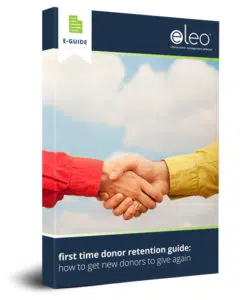
In the previous article on donor recognition programs for small nonprofits, we discussed the purpose of donor recognition programs, how programs are typically structured, and why these programs are so important to both small nonprofits and donors.
In a nutshell, donor recognition programs make each donor feel appreciated and valued. This helps you build a closer bond between donors and your nonprofit, leading to a better experience for donors and higher donor retention rates for your organization.
Let’s discuss best practices and helpful tips to get your donor recognition program started on the right foot and make it successful over the long haul!
Donor Recognition Best Practices for Small Nonprofits
First and foremost, make sure you have permission from each donor before recognizing them publicly. Some people simply don’t like the spotlight, while others want the focus to remain on the mission. Regardless of the reason, respect a donor’s desire to maintain their privacy.
Use your donor database to segment your donors and create tiers based on donation amount, donation type, donor type, and/or how long the donor has been giving. Tiers will help you define the criteria for various types and levels of recognition. However, you don’t have to use all four types of tiers.
For example, a newer nonprofit might focus on the amount given by individual donors and recognize them through email, social media, and live announcements at events. It’s always better to limit the scope of a program and make it truly meaningful than fall short of expectations because you tried to do too much.
The key is to be SMART and make sure your donor recognition program goals are specific, measurable, achievable, relevant, and timely. This will ensure your program is realistic and give you a sense of what must be done to make it successful. You’ll also have a more sustainable program that can grow and evolve over time.
That said, donor recognition should be a year-round practice. Get in the habit of recognizing donors for their support, both formally and informally. Communicate with donors, staff, and volunteers with updates on your donor recognition program throughout the year. Make it a big deal!
Factors to Consider When Developing a Donor Recognition Program
Your donor recognition program should align with the values and mission of your nonprofit, which will reinforce your shared purpose with donors and the community. This shows genuine appreciation, unlike a transactional approach in which you simply recognize dollar amounts or years given with a generic award.
Recognition should also be personalized to donors. Communicate not only the details about the donor and the gift, but the impact made possible by the gift. This will create a deeper, more memorable experience for the donor and give more weight to the recognition.
Once you launch your donor recognition program, seek feedback from donors. What did they appreciate most about the recognition they received? What would make the recognition more meaningful? Did anything rub them the wrong way? Use this feedback to continuously improve your program!
Ideas for Donor Recognition
Beyond the standard emails and social media posts, and event announcements, here is a small sampling of some of our favorite donor recognition ideas!
- Host donor appreciation/celebration events.
- Create a hall of fame.
- Create custom awards designed by local artists.
- Create impact awards that highlight success stories.
- Produce videos of donor interviews.
- Create a donor wall or pathway.
- Give branded apparel and gifts.
- Launch a Donor of the Month program.
- Name a facility, room, event, scholarship, or campaign after a donor.
- Offer special experiences, like private tours, exclusive meet-and-greets, and premium seating at events.
- Use signage and displays in and around your facility.
- Create a donor advisory board.
A donor recognition program is a core component of donor stewardship and a fantastic opportunity for small nonprofits to create a culture of appreciation. Use the information in your donor database to get started and apply these tips and ideas to express gratitude to donors!






